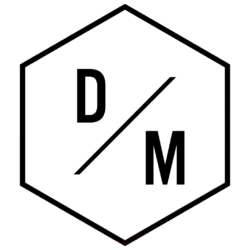Engineering teams face a decisive inflection point as artificial intelligence accelerates the move from manual data wrangling to automated, insight-driven workflows. This overview highlights how AI insights are reshaping data analysis across design, simulation, and operational layers, and why companies that integrate these capabilities will outpace competitors. Short, targeted examples follow to show practical implementations, vendor roles, and the governance challenges that accompany rapid adoption.
Arcadia Engineering, a mid-size firm specializing in infrastructure and embedded systems, provides the running example here. In 2025 Arcadia consolidated telemetry, CAD revisions, and field sensor data into a single analytics fabric. That consolidation unlocked predictive maintenance, optimized material usage, and shortened design cycles—outcomes grounded in AI insights that are now repeatable across disciplines.
AI insights in Engineering Data Analysis: Core Transformations
AI insights are transforming the foundational stages of engineering data analysis by automating ingestion, cleaning, and schema mapping. Rather than treating these tasks as manual chores, modern pipelines apply machine learning to infer structure and detect anomalies early.
Arcadia Engineering replaced a legacy ETL schedule with an AI-driven pipeline that reconciled CAD metadata from Autodesk and Siemens tools with sensor feeds. The result was a 40% drop in data normalization time and faster iteration on design changes.
Problem: Fragmented data sources and manual ETL
Engineering data often arrives in heterogeneous formats: simulation logs from ANSYS, versioned models from Dassault Systèmes, and telemetry stored in Oracle databases. This fragmentation creates friction and delays for engineers who need integrated views.
AI insights help by predicting field mappings and suggesting transformations, reducing human time spent on rote tasks.
Solution: AI-assisted schema mapping and anomaly detection
Tools can learn from historical mappings to propose transformations for new datasets. These proposals are reviewed rather than created from scratch, which preserves expert oversight while increasing throughput.
Arcadia used an AI model to auto-map PTC BOM fields to its central asset registry, cutting manual reconciliation by more than half.
- Faster ingestion through automated schema inference
- Reduced errors with ML-powered anomaly detection in logs
- Improved traceability across Autodesk, Siemens, IBM, and legacy sources
| Challenge | AI Insight | Vendor Integration |
|---|---|---|
| Heterogeneous schemas | Automated mapping suggestions | Autodesk, PTC |
| Late anomaly discovery | Streaming anomaly detection | IBM, Oracle |
| Slow ETL cycles | Adaptive ETL scheduling | Siemens, Bentley Systems |
Practical deployment requires integration with existing toolchains. Arcadia tied AI inference services to its version control hooks, so model suggestions appear alongside pull requests. This approach preserved review discipline while injecting AI insights directly into developer workflows.
When implementing, attention must be given to provenance and explainability. Engineers expect traceable decisions when AI alters transformation rules. Documented audit trails and model versioning become part of engineering governance.
Insight: Automating the grunt work of data preparation shifts engineering effort toward interpretation and design refinement, unlocking measurable productivity gains.
AI insights for Data Pipelines: Automation, ETL, Observability
AI insights extend beyond initial ingestion to the orchestration and observability of entire data pipelines. Modern engineering teams require pipelines that self-diagnose, auto-tune, and provide cost-aware routing decisions.
Arcadia adopted an observability layer that leverages AI to correlate pipeline metrics with downstream failures. That correlation reduced mean time to resolution and highlighted cost hotspots tied to specific model runs.
Automation: From ETL to Adaptive Orchestration
Adaptive orchestration uses predictive models to schedule heavy jobs in low-cost windows and to parallelize tasks based on historical runtime. This reduces both latency and cloud spend.
Oracle and IBM cloud offerings now include APIs that support such scheduling heuristics, while open-source frameworks expose hooks for custom resource predictors.
- Predictive scheduling for cost-efficiency
- Dynamic resource allocation based on forecast demand
- Automated retries with intelligent backoff tuned by AI
| Pipeline Area | AI Capability | Business Outcome |
|---|---|---|
| Scheduling | Predictive job timing | Lower cloud costs |
| Monitoring | Root-cause correlation | Faster incident resolution |
| Data Quality | Continuous anomaly detection | Improved model accuracy |
Observability is critical for engineering-grade AI adoption. Vendors such as Cisco and cloud providers have introduced agents and telemetry collectors that feed into ML models to surface hidden latencies. Arcadia used a hybrid approach combining open telemetry with vendor tools from Honeywell on the IoT side.
Integrating with enterprise governance requires that AI-driven changes are auditable. Teams should implement approval workflows for automated reconfiguration, mirroring the controls used for production deployment.
Another practical concern is third-party risk. Many pipelines ingest models or components from ANSYS or Bentley Systems, and any automated step must validate third-party outputs. Arcadia included signature verification and schema contracts as preconditions to automated ingestion.
AI insights enable observability that not only diagnoses failures but anticipates them. Predictive alerts triggered hours before critical runs allow teams to re-prioritize work and prevent downstream impacts.
Insight: When observability is AI-augmented, engineering pipelines evolve from reactive systems to proactive workflows that reduce cost and risk.
AI insights for Modeling and Simulation: CAD, FEA, and Predictive Analytics
AI insights are influencing core engineering activities such as CAD refinement, finite element analysis, and optimization loops that once required iterative human tuning. The result is faster, more reliable simulation-driven design.
Vendors like Siemens, Autodesk, PTC, ANSYS, and Dassault Systèmes have integrated ML features into modeling suites, enabling scenario generation, parameter sweeps, and surrogate models that accelerate exploration.
Design exploration accelerated by surrogate models
Surrogate models approximate expensive FEA runs, enabling thousands of design permutations to be evaluated in the time a single full simulation once took. Arcadia applied surrogate models to structural analyses, shrinking validation timeframes from days to hours.
Surrogate approaches work in tandem with high-fidelity runs: rough optimization via AI narrows candidate sets, and selected designs undergo detailed simulation for certification.
- Rapid design iteration using ML surrogates
- Automatic parameter tuning based on historical simulation outcomes
- Integration of CAD revisions from Autodesk and Siemens with simulation inputs
| Use Case | AI Role | Typical Result |
|---|---|---|
| Topology optimization | Generative design suggestions | Material reduction, weight savings |
| Thermal analysis | Surrogate modeling | Faster iteration cycles |
| Multiphysics coupling | Automated sensitivity analysis | Improved system-level performance |
Case study: By pairing ANSYS solvers with an ML-based optimizer, Arcadia reduced material usage on a structural bracket by 22% while meeting safety factors. The optimization loop suggested novel lattice structures that traditional heuristics had not considered.
Human oversight remains essential. Engineers must validate that AI-generated geometries meet manufacturability and compliance constraints. Vendors such as Bosch and Honeywell have added modules that flag manufacturability issues early, bridging design automation and shop-floor realities.
Another practical advantage is the integration of field data into simulation cycles. Real-world telemetry can highlight stress hotspots unseen in idealized models. Arcadia fed sensor data through a preprocessing AI pipeline to refine boundary conditions, improving prediction accuracy for life-cycle analysis.
Regulatory acceptance and traceability are necessary for safety-critical systems. Companies working with aerospace or energy partners often must provide explainable model chains that connect AI suggestions back to the original data and constraints.
Insight: Embedding AI insights into modeling and simulation compresses design cycles and surfaces non-intuitive solutions, but success depends on coupling automation with rigorous validation and manufacturability checks.
AI insights for Operational Decision-Making: Cybersecurity, Cloud, and Compliance
Operational decision-making benefits from AI when the scope spans cybersecurity, cloud resource planning, and regulatory compliance. AI insights synthesize signals across domains to produce recommendations that are timely and actionable.
Security-focused AI models assist SOC teams by triaging alerts and surfacing adversarial patterns. Integration with cloud providers and enterprise stacks from Oracle and IBM permits automated containment actions that limit exposure.
Cybersecurity: AI as an active defender
Agentic AI and detection models can identify novel attack vectors by correlating telemetric anomalies with threat intelligence. For engineering firms that run connected equipment, this capability prevents compromise of design IP.
Arcadia invested in AI-assisted cybersecurity training and monitoring to defend its design repositories and simulation assets.
- Automated alert triage to reduce analyst load
- Behavioral baselines for unusual access to CAD or simulation data
- Integration with corporate cyber training to reduce insider risk
| Operational Area | AI Insight | Example Vendor/Tool |
|---|---|---|
| Security | Alert prioritization and adversarial testing | Exabeam, CrowdStrike |
| Cloud | Cost-optimized deployments | AWS, Oracle Cloud |
| Compliance | Automated evidence collection | IBM, Microsoft |
Compliance workflows are increasingly automated. AI can match policy requirements to telemetry traces and produce the documentation required for audits. This both speeds audits and reduces human error in evidence collection.
Cloud cost control benefits from predictive scaling and job placement. Vendors provide recommendations that map compute needs to the most cost-effective regions while maintaining latency SLAs for real-time control systems.
Operational AI adoption requires cross-functional governance. When AI flips a configuration or isolates a service for security, the action must be reversible and documented. Arcadia maintains a human-in-the-loop policy for any action that affects safety or production.
Insight: Operational AI insights enhance resilience and efficiency, but their value depends on integrated governance, vendor orchestration, and human oversight to ensure safe outcomes.
AI insights: Our opinion
AI insights represent a paradigm shift for engineering organizations. When applied thoughtfully, they compress timelines, expose novel design spaces, and harden operational practices. The future belongs to teams that combine domain expertise with disciplined AI integration.
Adoption recommendations include building an observability-first architecture, integrating AI at decision points rather than replacing experts, and maintaining rigorous provenance for every automated choice. Partnerships with vendors such as Siemens, Autodesk, IBM, PTC, ANSYS, Dassault Systèmes, Bentley Systems, Bosch, Oracle, and Honeywell should focus on interoperability and explainability.
- Design governance: preserve explainability for safety-critical decisions
- Pipeline resilience: instrument observability and rollback paths
- Vendor strategy: prioritize open interfaces and data portability
| Recommendation | Why it matters | First steps |
|---|---|---|
| Observability-first | Enables proactive fixes | Install telemetry across pipelines |
| Human-in-the-loop | Retains domain correctness | Implement review gates for AI changes |
| Vendor interoperability | Reduces lock-in risk | Standardize on open formats |
For further practical reading and case studies on AI-driven engineering and cybersecurity, consult coverage including AI deployment takeaways, enterprise cyber training, and market insights available across industry summaries. Examples include resources on agentic AI strategies, cybersecurity training programs, and product-level case studies that illustrate concrete benefits.
Readers are encouraged to explore in-depth articles and reports to evaluate how AI insights can be applied to specific engineering domains, and to share experiences that refine collective practice for the community.
Selected links for deeper reading and industry signals:
- AI key takeaways from GAIM 2025
- Exabeam AI strategy and agentic insights
- Corporate cybersecurity training resources
- AI and predictive insights for ERP
- Agentic AI for cyber defense
- AI insights and innovative engineering solutions
- AI-driven analytics with Power BI
Final insight: AI insights are not a silver bullet, but when paired with disciplined engineering practices they deliver predictable gains. Teams should pilot targeted use cases, measure outcomes, and scale what proves measurable and repeatable.


